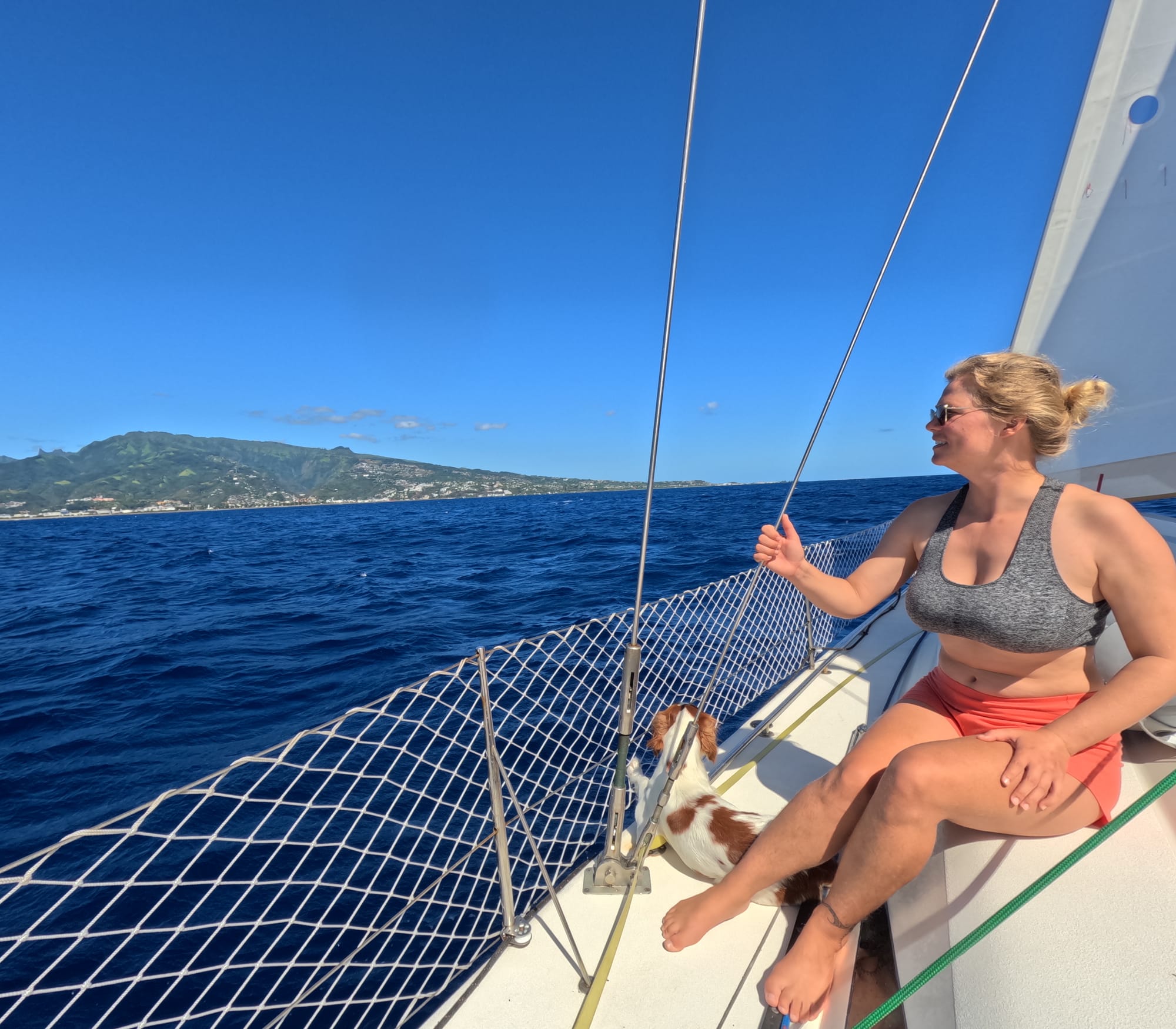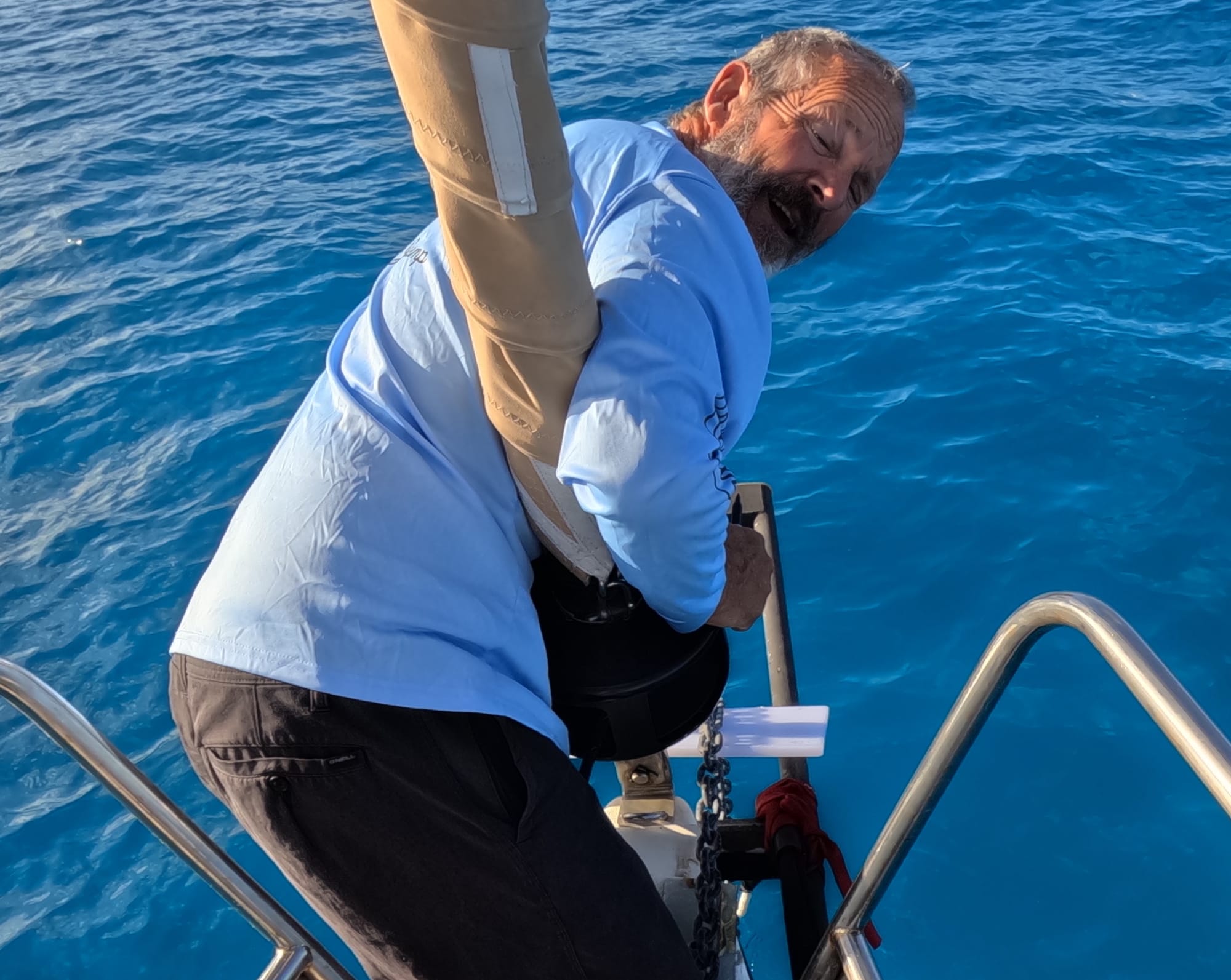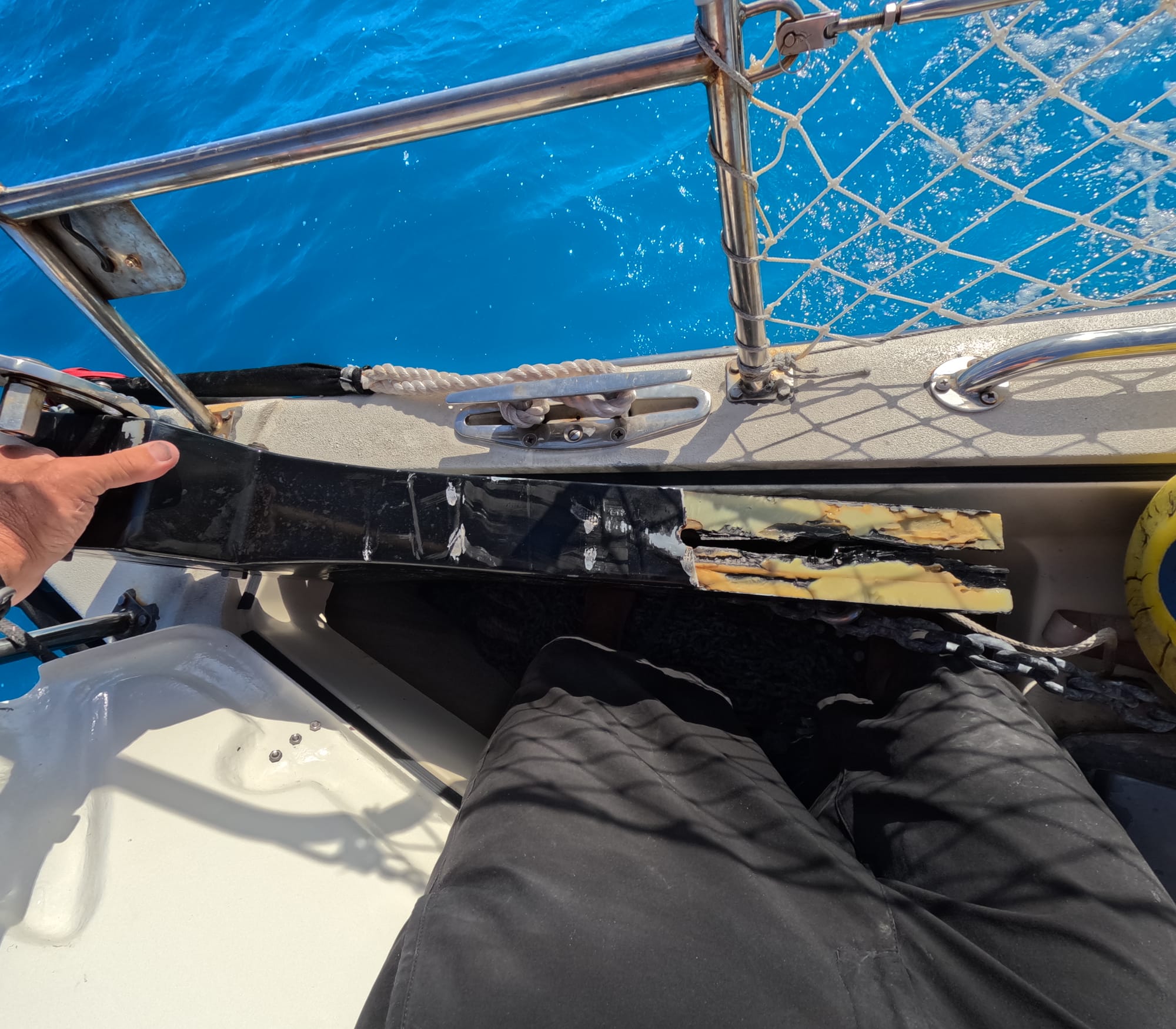Papeete, Tahiti - Fixing Broken Stuff - June 22

It’s been a couple of weeks since my last update! I start writing a post, then I don’t quite get it done. Sorry! Ill do an update now on why we are in Tahiti earlier than planned, then I’ll post about our last atoll, Toau.
On June 17th we left Toau around 3 in the afternoon and set sail for our next atoll, Rangiroa. We really loved the False Pass in Toau and it had been a picture perfect day, so it was hard to leave, but we wanted to get to Rangiroa to meet Jade, one of or crew members that sailed with us from Newport Beach to the Marquesas. We were planning to go SCUBA diving with Jade on Wednesday.
This was an overnight sail, and we experienced light winds and had to motor sail a bit. The sunset that night was absolutely beautiful with colors ranging from deep purple to bright yellow. It lasted about and hour and we sat on the bow together as a family taking photos and just enjoying the beauty of God’s magnificent creation!
After and easy night of sailing, we transited the pass at Rangiroa about 8 am and encountered some of the largest waves we have seen in a pass, 3 feet tall or so, including swirling whirlpools It was nuts!. Dawn navigated through it all like a pro! When we got to the anchorage, the sea conditions were not looking good. The wind was blowing about 15 knots from the south, which we expected, but it was kicking up a much larger swell due to the 25 mile width of the atoll and was not what we anticipated. We did our best to find a sandy spot to drop the anchor, with coral heads popping up all around us like a bunch of polka dots. After we found what we thought was a sandy patch, we got our anchor set we realized we were much closer to shore than we would have liked. Sometimes its hard to anticipate exactly where the boat will sit after dropping anchor, and we did not do a great job.
The wind was picking up and the waves were getting bigger, and I kept looking behind the boat and at the waves crashing on the shore only a few hundred yards behind us. If we had a problem and our anchor let go, we would have no time to react. So we made the decision to hoist the anchor and move the boat.
This is much easier said than done, with waves and wind pushing the boat back as we tried to raise the anchor with our windless. Dawn did a great job keeping the boat pointed into the wind (not easy with all the waves) and Danielle and I worked the bow and the windless to try and get the anchor onboard and not catch any of the coral around us. We had put floats on our chain to help raise the chain off the bottom so no chain would wrap on coral heads. And it seemed to work well until we got to the last 60 feet of chain. Then the boat got caught by a gust of wind, and the anchor chain pulled tight against the bow roller that supports the chain. The anchor then caught a piece of coral so it could not move up, all while a large wave pushed our bow skyward. The chain went taught and all the pressure was on our bow roller, and it just snapped like a twig! This was NOT GOOD! We need our bow roller to guide the anchor chain when lowering and raising our anchor and for holding the anchor in place while underway. And now it was GONE! With no way to pull the anchor up, we had to start letting chain back out, but without the roller it scraped on the boat deck and our bow sprit.

I wish I was calmer in these situations, but I am not. I freaked out saying “we are done! We are F&CK$D!” It was not pretty, and this was significant boat damage. Thankfully Danielle and Dawn have cooler heads than me. We continued to let the chain out and put the boat right back where we had it in the first place.
At the point the wind picked up into the mid twenties and we were experiencing swells of over 3 feet causing the boat to bounce like a bucking bronco. We all sat down to discuss our options:
1. I would use my SCUBA to get the anchor off the coral (should have done this in the first place), tie a line to the anchor, then get into the dinghy and pull the anchor up by the line and into the dingy. I would then continue to try and pull all the chain into the dinghy. Then I would have to transfer it all to the boat as it bounced about wildly. Did not seem like a great option.
2. Use my SCBUA, clear the anchor from the coral, and try to pull it all back on deck by hand directly onto the boat. With the wind and waves putting pressure on the anchor, probably not possible.
3. Sit things out where we were and wait till morning to deal with it. The wind and waves were forecasted to calm down
We went with option 3. The others were too risky given the conditions. I put on an anchor alarm that uses a GPS to tell me if we have moved too far, and kept watching the boat’s movements. There were lots of coral heads around us, so if the anchor did let loose from the one it was hooked on (unlikely) it would not go far before catching on another coral head. This was NOT a great place to anchor!
Meanwhile, Danielle took a wet and WILD dinghy ride to shore to pick up Jade and her brother so we could hang out for a bit. Jade started chatting with her new boyfriend who is a boat captain in the Marquesas with TONS of experience. He gave me the idea of putting a temporary ramp on the bow of the boat so I could use the windless to pull up the anchor. Dawn and I were able to take large plastic cutting board that fit perfectly as a ramp in front of our bow and resting on our bow sprit (see photo). I now felt comfortable we could get the anchor up in the morning.

We woke up Wednesday morning to a nice calm day. The wind was way down and so were the waves!! Dawn, Danielle and I sat down and discussed the plan so we each knew what we had to do to keep ourselves and the boat safe. We mounted our plastic board ramp so the chain would slide up and into the windless. I then put on my SCUBA gear and dove down to the anchor. I had to unwedge the anchor from the coral it was jammed into. I then “walked” on the bottom, carrying the 45lb anchor and placed it in a sandy patch. I also followed the chain all the way back to the boat, moving it off or coral and onto sand.

I climbed onto the boat, took off my SCUBA gear and joined Danielle on the bow of the boat. Dawn was in the back steering and using the engine to help us work our way up the chain. I directed Danielle as she used the windless to start pulling up the chain. Our plastic ramp worked perfectly, and the chain easily slip up in and into the windless. This was awesome! The anchor came up easily since it was just laying on sand. We got the anchor up and then had to pull it through the bow sprit and into the anchor locker. Normally the anchor rests securely on the bow roller, but with that gone we had to put it in the locker. Its no easy tasks lifting the 45lbs of steel up and over the railing and gently into the locker. Danielle was great at helping me with the awkward lifting.
With the anchor up and secured we got the dingy back on deck and slowly headed out the Rangiora pass. Once out of the pass, we set a course for Tahiti and had a beautify sail there covering over 200 mile in 26 hours.
While in Tahiti we needed to get a slip on order to get work done on the boat. Plus, there are only a couple of places that you can anchor, and they are not well located to get at the resources we would need for repairs. The challenge was finding a slip. There are only two marinas, on that took reservations, but was full until July, and the other, Marina Papeete did not take reservations, so you needed to wait for a boat to leave, then get your boat in quickly to take the slip before someone else does. Kind of crazy. So we went to Marina Papetee, since they told us two boats had left the day we were arriving. So we were able to get in here and get a slip.
Now on to finding the people that can help fix our bow roller….

